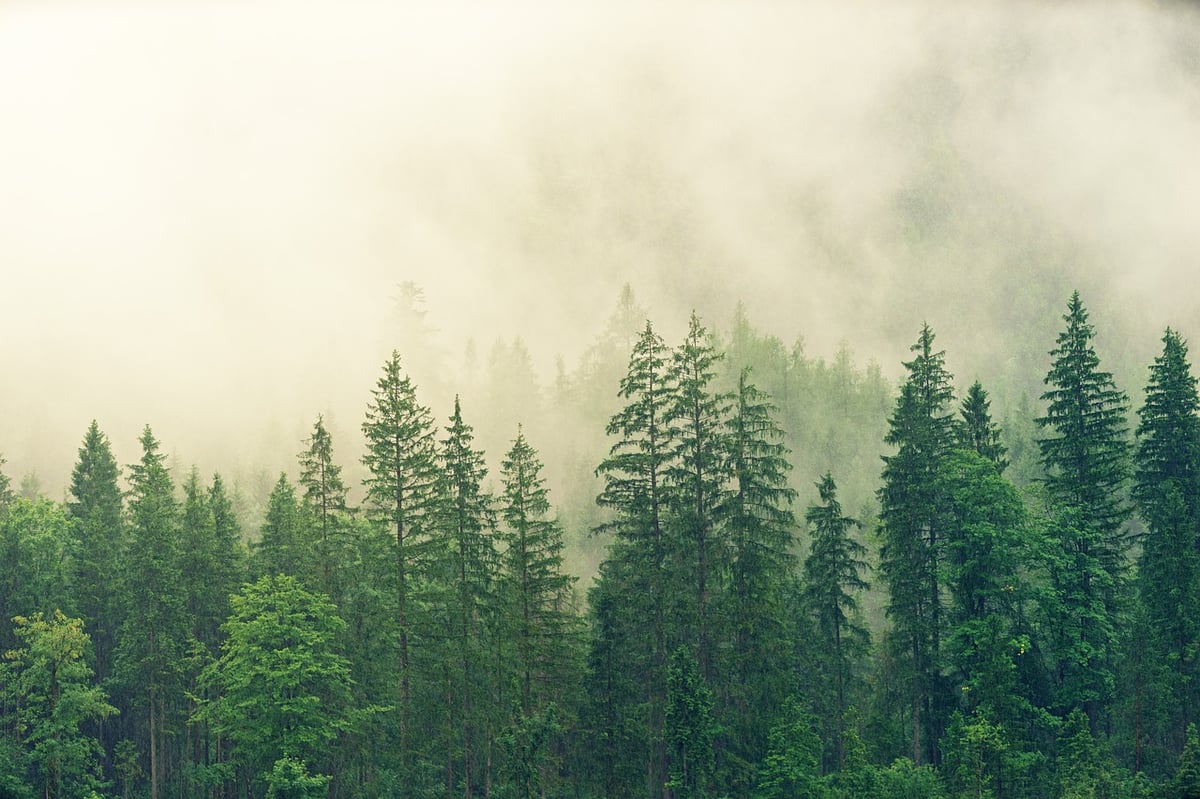Although deforestation is happening at an alarming rate, vast forests still cover a significant proportion of the world’s entire landmass.
Aside from deserts and arctic tundra, forests and woodlands can be found in many of the globe’s different biomes and landscapes.

However, there is one question that scientists have been trying to answer for a long time – how many trees are there on earth?
Working out this figure, even a calculated estimate, is important for realizing the amount of oxygen the world’s trees provide, and the total carbon dioxide that they sequester.
Various scientific studies over the years have estimated the number of trees in the world to be around a few hundred billion.

However, the most recent study, published in the Nature journal in 2015, used updated estimation techniques to conclude that there are approximately 3.04 trillion trees on Earth. This means that there are almost 422 trees for every living person on the planet. This figure is around 8 times higher than previous estimates, due to changes in the way that forest-related satellite data was recorded and measured for the 2015 study; this included taking into account the density of forests.
Although trees are found across many parts of the world’s landmass, vast and dense forests only cover certain parts of the earth.
As the 2015 study shows, the great, sweeping forests of Russia contain around a fifth of the globe’s trees, whereas Brazil harbors 302 billion trees, many of which thrive in the vast Amazon Rainforest.
In total, both tropical and sub-tropical forests are home to some 1.3 trillion trees, many of which grow in the vast Equatorial rainforests of Africa, Asia and South America.
However, 740 billion thrive in the expansive boreal forests of northern Europe, Asia and North America, whereas around 660 billion grow in temperate climate zones.
Deforestation, both past and present, has significantly reduced total tree numbers. Around 12,000 years ago, before both human civilization and agriculture began, it is estimated that around 6 trillion trees existed on the planet.
A significant reduction has been seen on the globe since, especially due to agricultural expansion after the end of the last Ice Age.
Unfortunately, trees are still being removed from the earth at a rapid rate the 2015 Nature study also estimates that around 15 billion trees are being cut down each year, many of which are not replanted. At that rate, only 2.5 trillion trees will exist on earth by 2050.
How many tree species are there in the World?
On Monday, researchers presented the world's biggest forest database. The database contains information on over 44 million individual trees from over 100,000 locations in 90 countries. This vast amount of data has allowed researchers to estimate that there are approximately 73,300 tree species on Earth.

However, initiatives have been undertaken in recent years to slow down the rate of tree loss, either by protecting forests from deforestation, or by initiating tree-planting schemes.
For example, many countries around the world, including (but not limited to) China, Ethiopia, and the United Arab Emirates have initiated large tree-planting schemes.
In 2019 alone, 7 billion new trees were planted across the world, putting a large dent in the number of trees that were cut down in that year.
If this trend continues, and higher numbers of new trees are planted each year, the total number of trees on earth will eventually stabilize.





